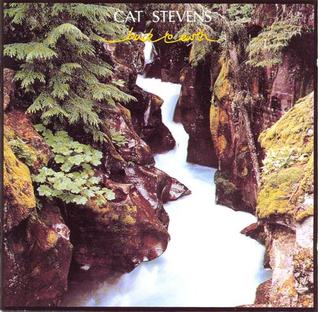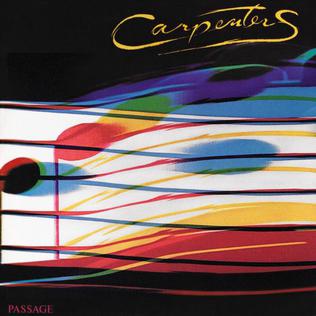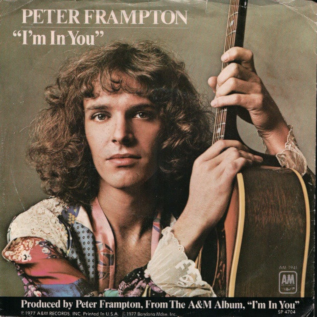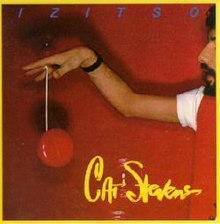
Minute by Minute is the eighth studio album by American rock band the Doobie Brothers, released on December 1, 1978, by Warner Bros. Records. It was their last album to include members John Hartman and Jeff "Skunk" Baxter.

Elkie Brooks is an English rock, blues and jazz singer. She was a vocalist with the bands Dada and Vinegar Joe, and later became a solo artist. She gained her biggest success in the late 1970s and 1980s, releasing 13 UK Top 75 singles, and reached the top ten with "Pearl's a Singer", "Sunshine After the Rain" and "No More the Fool" (1986). She has been nominated twice for the Brit Awards.

Endless Flight is the fourth album by English singer-songwriter Leo Sayer, which was released in 1976. It was released in the US and Canada by Warner Bros. Records and in the UK by Chrysalis Records.

Catch Bull at Four is the sixth studio album by Cat Stevens. The title is taken from one of the Ten Bulls of Zen.

"I Can't Tell You Why" is a song by the American rock band Eagles that appeared on their 1979 album The Long Run. It was written by band members Timothy B. Schmit, Glenn Frey and Don Henley. Recorded in March 1978, it was the first song finished for the album and the first Eagles song to feature Schmit on lead vocals. Released as a single in February 1980, it became a Billboard top 10 hit in April, reaching number eight on the Billboard Hot 100 and number three on the Adult Contemporary chart. It was the group's last top ten hit on the Billboard Hot 100.

The Polymoog is a hybrid polyphonic analog synthesizer that was manufactured by Moog Music from 1975 to 1980. The Polymoog was based on divide-down oscillator technology similar to electronic organs and string synthesizers of the time.

"The First Cut Is the Deepest" is a 1967 song written by British singer-songwriter Cat Stevens, originally released by P. P. Arnold in April 1967. Stevens's own version originally appeared on his album New Masters in December 1967.

Foreigner is the seventh studio album released by British-Emirati singer-songwriter Cat Stevens in July 1973. In addition to the minor hit "The Hurt", which received a moderate amount of airplay, Foreigner also included such songs as "100 I Dream" and the 18-minute-long "Foreigner Suite", which took up the entirety of side one.

Numbers is the ninth studio album, and the first concept album by singer/songwriter Cat Stevens released in November 1975.

Back to Earth is the eleventh studio album released by the British singer/songwriter Cat Stevens. It is the only album he recorded using the name Cat Stevens after his conversion to Islam until the release in September 2017 of The Laughing Apple, his fifteenth studio album. It was also the last album of contemporary Western music that he recorded until An Other Cup, 28 years later.

"Sweet Talkin' Woman" is a 1978 single by Electric Light Orchestra (ELO) from the album Out of the Blue (1977). Its original title was "Dead End Street", but it was changed during recording. Some words that survived from that version can be heard in the opening of the third verse, "I've been livin' on a dead end street".

"Give a Little Bit" is the opening song on Supertramp's 1977 album Even in the Quietest Moments... The song was released as a single that same year and became an international hit for the band, peaking at number 15 on the Billboard Pop Singles chart. It was a chart hit in the band's native UK, reaching number 29 on the UK Singles Chart. The single was re-released in 1992 to raise funds for the ITV Telethon Charity event, but failed to chart.

"Year of the Cat" is a song by Scottish singer-songwriter Al Stewart, released as a single in July 1976 in the UK. The song is the title track of his 1976 album Year of the Cat, and was recorded at Abbey Road Studios, London, in January 1976 by engineer Alan Parsons. The song peaked at number 8 on the Billboard Hot 100 for the consecutive weeks of March 5 and 12, 1977. Although Stewart's highest placed single on that chart was 1978's "Time Passages", "Year of the Cat" has remained Stewart's signature recording, receiving regular airplay on both classic rock and folk rock stations.

Passage is the eighth studio album by the American music duo The Carpenters. Released in 1977, it produced the hit singles "All You Get from Love Is a Love Song", "Calling Occupants of Interplanetary Craft" and "Sweet, Sweet Smile". The Carpenters' "Sweet, Sweet Smile" was picked up by Country radio and put the duo in the top ten of Billboard's Country chart in the spring of 1978.

"Alternative Girlfriend" is a song by Canadian band Barenaked Ladies, written by Stephen Duffy and Steven Page, from their 1994 album Maybe You Should Drive. The song was released as the second single from the album and peaked at No. 22 on the Canadian RPM Top Singles chart and No. 4 on the RPM Adult Contemporary chart. It later appeared on their 2001 compilation, Disc One: All Their Greatest Hits.

"I'm in You" is the hit song released by Peter Frampton as a single from his album I'm in You, released in 1977. The song is Frampton's biggest hit on charts around the world. It rose to No. 2 on the US Billboard Hot 100 and No. 1 on the Cash Box Top 100 and in Canada, becoming his most successful single.

The Very Best of Cat Stevens is the title of a compilation album by Cat Stevens. There are multiple albums released with this title. The first was released by Polygram on its recently acquired Island Records label in January 1990. Its cover picture appears to be a reference to the Teaser and the Firecat album cover; both feature a boy in a top hat, "Teaser", accompanied by an orange cat, "Firecat", beside a fence with a full moon overhead.
"Art for Art's Sake" is a single by 10cc released in 1975. It was taken from the How Dare You! album, and, in an edited version, reached No. 5 on the UK singles chart.
"(Remember the Days of the) Old Schoolyard" is a duet by English singer-songwriter Cat Stevens and Elkie Brooks. It was released as the lead single from his tenth studio album Izitso (1977).
This is the discography of English singer Elkie Brooks.


















